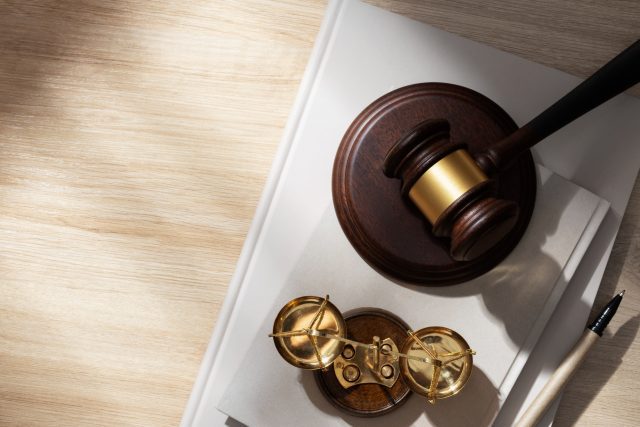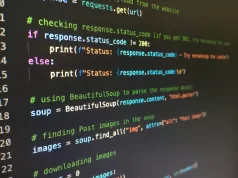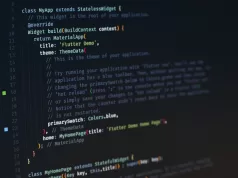Explore essential guidelines for Flutter app developers to navigate legal rules and regulations in the USA. Gain insights into ensuring compliance and successful app development.
Charting the Legal Course: Navigating Regulations for Flutter App Developers in the USA
In the dynamic universe of app development, the United States stands tall as a nucleus of innovation and progress. As Flutter app creators embark on their creative odysseys, a vital landscape of regulations and legal intricacies awaits exploration. From privacy protocols to intellectual property shields, the legal facets are integral to shaping apps that not only captivate audiences but also align with the intricate fabric of laws. This guide sets sail through the regulatory expanse of the USA, unveiling the legal compass that steers Flutter app developers towards triumph while ensuring adherence to standards and safeguarding in an increasingly digital epoch. Join us on this expedition, where ingenuity and legal prudence harmonize for a seamless journey ahead.
Explore how to overcome challenges faced by Flutter developers in the USA in our comprehensive guide: Navigating the Landscape: Overcoming Challenges Faced by Flutter Developers in the USA
Preparation and Perspective: Laying the Foundation for Legal Mastery
In the dynamic universe of app development, the United States stands tall as a nucleus of innovation and progress. As Flutter app creators embark on their creative odysseys, a vital landscape of regulations and legal intricacies awaits exploration. From privacy protocols to intellectual property shields, the legal facets are integral to shaping apps that not only captivate audiences but also align with the intricate fabric of laws.
However, before we delve into the depths of the USA’s regulatory landscape, it’s crucial to establish a solid foundation. This section, “Preparation and Perspective,” provides you with the preparation and outlook needed to navigate the legal considerations awaiting Flutter app developers.
Understanding the Legal Terrain
Before immersing ourselves in specific legal aspects, let’s grasp the foundational principles. Learn about key terms, concepts, and the overarching legal framework that influences the app development sphere in the USA. By comprehending these fundamental elements, you’ll approach the ensuing legal exploration with clarity and insight.
Embracing Legal Literacy
Legal language can often seem like an intricate puzzle. In this segment, we break down complex legal jargon into comprehensible pieces. Equip yourself with the terminology that forms the basis of discussions around privacy policies, user agreements, and intellectual property rights. By embracing legal literacy, you’ll confidently navigate the legal nuances that lay ahead.
Building a Compliance Mindset
Compliance with legal regulations is not just a legal obligation; it’s a strategic advantage. Learn how adopting a proactive approach to compliance can safeguard your app, reputation, and users’ trust. Explore real-world examples that underscore the importance of integrating legal considerations into your app development strategy.
Charting the Legal Course Ahead
Our preparation phase concludes by charting a roadmap for the legal journey that lies ahead. We’ll discuss the core legal considerations specific to Flutter app development and provide you with a glimpse of what’s in store. Armed with foundational knowledge, you’ll be well-equipped to explore privacy, security, intellectual property, and other pivotal legal aspects in the subsequent sections.
By grasping these essential concepts and perspectives, you’ll be better prepared to navigate the legal landscape that awaits Flutter app developers. So, buckle up as we embark on this enlightening exploration, where innovation meets compliance, and creativity dances with legal precision.
Read more: How to Become a Flutter App Developer in the USA
Legal Considerations for Flutter App Developers in the USA
In the dynamic realm of Flutter app development, the United States stands as a beacon of innovation. However, this landscape is not just about innovation; it’s also about compliance and ethics. Legal considerations are the foundation that ensures your app not only captivates users but does so responsibly. From safeguarding user data to protecting intellectual property, each legal facet is a piece of the puzzle that shapes your app’s journey in harmony with the law. As you embark on this journey of app development, understanding and adhering to these legal aspects becomes essential for ensuring your app’s success while staying within legal boundaries.
User Data Privacy and Protection:
- Implement robust data encryption and secure storage practices for user data.
- Provide users with clear options to access, modify, and delete their personal information.
- Comply with data breach notification laws by promptly informing users if their data is compromised.
Intellectual Property Rights:
- Conduct thorough research to ensure that your app’s design and features do not infringe on existing trademarks, copyrights, or patents.
- Consider registering your app’s unique elements, such as logos or brand names, to protect them legally.
User Agreement and Terms of Use:
- Clearly outline the consequences of violating your app’s terms of use, including potential account suspension or legal action.
- Specify the governing law and jurisdiction that apply to disputes arising from app usage.
Accessibility Compliance:
- Design your app’s interface to be usable by individuals with disabilities, incorporating features like screen reader compatibility and keyboard navigation.
- Include alt text for images and ensure that interactive elements are easily navigable for users with disabilities.
Advertisement Regulations:
- Avoid deceptive advertising practices, such as false claims or misleading visuals that could misrepresent your app’s functionality.
- Clearly label advertisements within your app to distinguish them from regular content.
Age Restrictions and Content Filtering:
- Implement age verification mechanisms for apps with age-restricted content, ensuring that only appropriate users can access certain features.
- Create content filters that prevent underage users from encountering inappropriate or mature content.
Payment and Billing Practices:
- Clearly display pricing, currency, and any additional fees associated with in-app purchases or subscriptions.
- Provide an easy way for users to cancel subscriptions and manage their payment preferences.
Security and Data Breach Notification:
- Regularly update your app’s security protocols to address emerging threats and vulnerabilities.
- Establish a data breach response plan outlining steps to mitigate the impact of a security breach.
Location-Based Services:
- Obtain explicit user consent before collecting or using location data, explaining how it enhances the user experience.
- Allow users to control when and how their location data is accessed within your app.
COPPA Compliance (If Targeting Children):
- Follow COPPA guidelines when collecting personal information from children under 13.
- Obtain verifiable parental consent before collecting any data from young users.
Third-Party Integrations and Licenses:
- Review and comply with the terms of use and licensing agreements of third-party services, APIs, and libraries integrated into your app.
- Clearly attribute the use of third-party components in your app’s credits or acknowledgments section.
Dispute Resolution and Jurisdiction:
- Specify methods of dispute resolution, such as arbitration or mediation, in your terms of use to provide a clear path for conflict resolution.
- Clearly outline the jurisdiction where legal actions related to your app will take place.
GDPR and International Users:
- If your app is accessible to users in the European Union, designate a Data Protection Officer (DPO) if required by the GDPR.
- Implement mechanisms to handle user data export requests and the “right to be forgotten.”
Electronic Communications and Consent:
- Include a clear opt-out mechanism in marketing communications to comply with the CAN-SPAM Act.
- Provide users with the ability to manage their communication preferences within your app.
Health and Medical Data:
- Ensure that any health-related data collected adheres to HIPAA’s stringent data protection and privacy requirements.
- Encrypt and secure health data during storage and transmission.
Consumer Protection Laws:
- Avoid deceptive practices such as false advertising, misleading endorsements, and misrepresentation of your app’s capabilities.
- Provide accurate and transparent information about your app’s functionality and benefits.
Export Control and Encryption Regulations:
- Familiarize yourself with the Export Administration Regulations (EAR) to determine whether your app’s encryption technology requires an export license.
- Understand the limitations of exporting encryption software to certain countries or entities.
End-User License Agreement (EULA):
- Include provisions that clearly state the user’s rights and restrictions when using your app.
- Specify any conditions under which the EULA may be modified or updated.
Social Media Integration:
- Comply with social media platforms’ API usage policies and terms of service when integrating sharing features or user authentication.
- Ensure that users’ social media data is handled in accordance with privacy laws.
Liability and Disclaimer Clauses:
- Draft liability clauses that define the extent of your app’s responsibility for user actions, potential errors, or damages.
- Include disclaimer
Navigating the Legal Landscape for Flutter App Success
In the ever-evolving world of Flutter app development, crafting an exceptional user experience goes hand in hand with legal compliance. The United States offers a stage where innovation thrives, but legal considerations play a crucial role in shaping your app’s journey. From data privacy and intellectual property to user agreements and accessibility, each facet is a brushstroke that contributes to the masterpiece of your app’s success.
As you embark on your app development voyage, remember that legal awareness is not a burden; it’s an empowering tool that fortifies your creations. By weaving legal considerations into the fabric of your development process, you’re not only ensuring your app’s longevity but also safeguarding user trust. These legal foundations are the compass that guides you through the complexities of app creation, ensuring that innovation and responsibility harmonize beautifully.
So, embrace the legal landscape as an integral part of your app’s story. As you navigate this intricate terrain, keep in mind that each legal choice is a declaration of your commitment to excellence, ethics, and the quest for a thriving app ecosystem. With a fusion of innovation and legality, your Flutter apps have the potential to captivate users, leave a lasting impact, and shape the digital landscape for years to come.
Frequently Asked Questions: Navigating Legal Aspects of Flutter App Development
Q1: What are the key legal considerations during Flutter app development?
A1: Legal aspects encompass data privacy, intellectual property rights, user agreements, accessibility compliance, advertisement rules, age limits, and more. These factors ensure your app operates ethically and within legal boundaries.
Q2: How do I ensure compliance with user data privacy regulations?
A2: Ensure data encryption, user data control, and prompt breach notifications. Adhere to GDPR, COPPA, and other relevant regulations to protect user information.
Q3: Can I incorporate existing content without infringing on intellectual property rights?
A3: Thorough research is vital to avoid copyright, trademark, or patent violations. Seek legal guidance or create original content to ensure compliance.
Q4: How can I enhance the effectiveness of user agreements and terms of use?
A4: Clearly state consequences for violations, define dispute resolution methods, and make terms easily accessible within the app.
Q5: What steps promote accessibility for users with disabilities?
A5: Design with features like screen reader compatibility, alt text for images, and keyboard navigation to enhance accessibility.
Q6: How can I navigate advertising regulations effectively?
A6: Steer clear of deceptive ads, distinguish them from content, and provide accurate info about your app’s functionality.
Q7: Are there age-related restrictions to consider?
A7: Implement age verification for restricted content and employ filters to safeguard younger users from inappropriate material.
Q8: What’s important in payment and billing practices?
A8: Transparently displays pricing, currency, and fees for in-app purchases, and allows easy subscription management.
Q9: How to handle security and data breaches?
A9: Regularly update security measures, establish breach response plans, and communicate breaches to affected users.
Q10: Can I use third-party services in my app?
A10: Yes, adhere to third-party agreements, review licensing terms, and provide proper attribution.
Navigating legal aspects in Flutter app development involves attention, awareness, and adaptability. Consider these FAQs to create apps that innovate while respecting user rights, transparency, and trust.



















